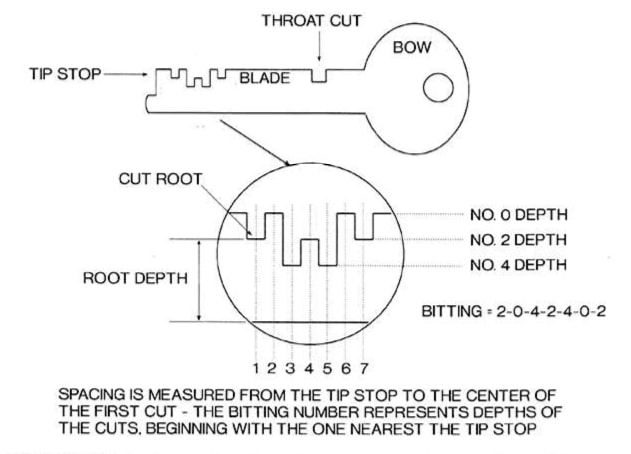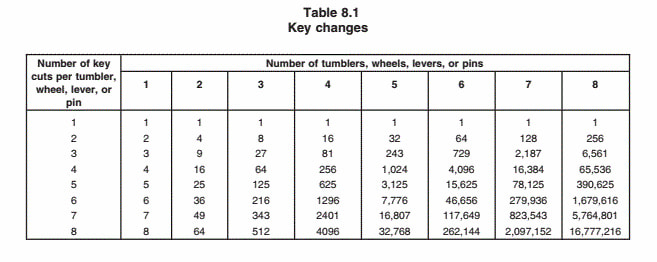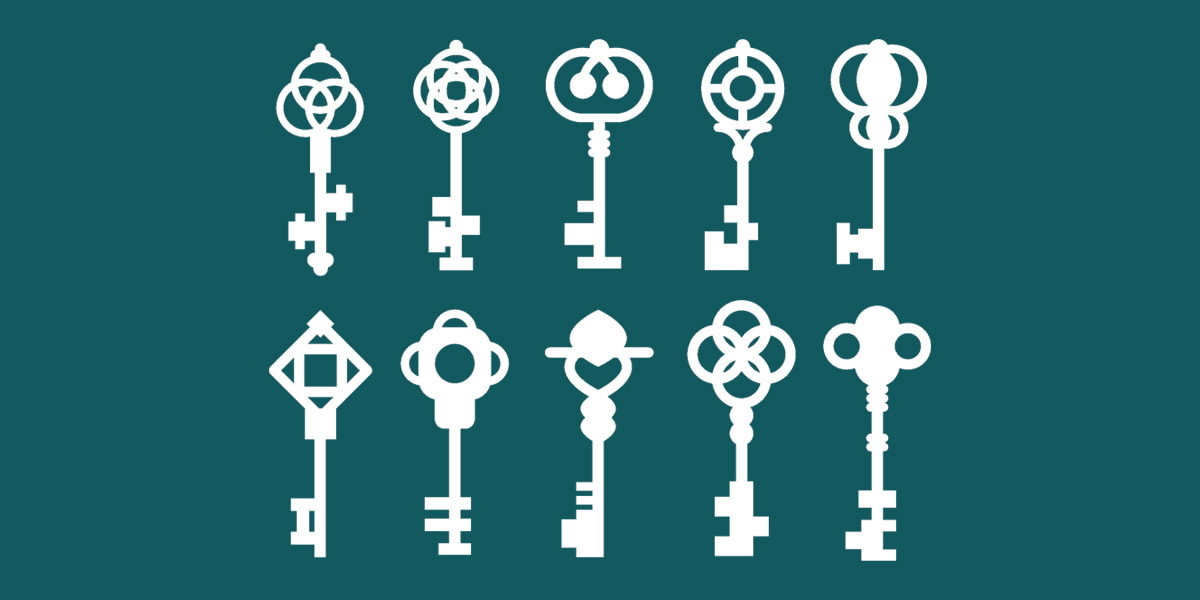Key changes, alow knowns as key combinations or key variations, is the maximum number of how many different keys that a lock design can accept. The simple fact is, the more key changes the lock design can provide, the harder it is to decode. We will mainly talk about double bitted lever locks here as they are the main types of key lock for safes and vaults.
How are key changes counted?
For levers locks, counting the possible key changes is not hard.
Number of key changes = (number of different key cuts) ^ (number of levers)
For example, a 3-lever lock with 4 different key cut lengths, then the possible key changes are 4^3= 64

Key cuts and number of levers
Minimum requirement of key changes
According to UL 437 – standard for safety key locks, there is a minimum requirement of key changes to ensure the lock is secure for different applications.
For door locks and locking cylinders, there shall be at least 1000 key changes for a design.
For security container key locks(key lock for safes, vaults, security containers, etc), there shall be at least one million key changes for a design.
For two-key locks(usually refers to safe deposit locks), there shall be at least 64 guard key changes, and at least 15000 customer key changes for a design.

Here is the table of key changes up to an 8 lever, 8 key cuts lock.
From the table above, we can have some basic conclusions.
As the number of key cuts is normally between 5~7, we can have a quick conclusion that:
For security container key locks(safe key locks):
An 8 lever key lock is the minimal requirement.
For two-key locks(safe deposit locks):
A 6 lever customer key lock is the minimal requirement
